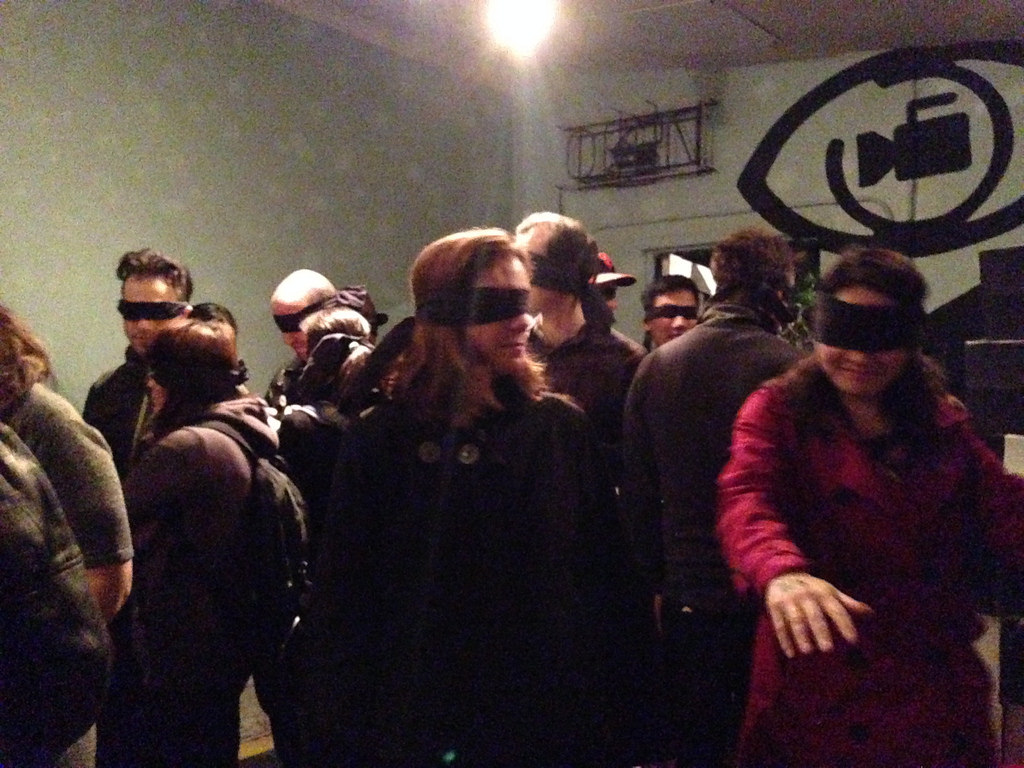When VolteFace found out that there has been a 64% increase in the number of people seeking treatment for problems relating to cannabis, we wanted to find out how the industry has evolved to cater to this emerging client group. VolteFace’s upcoming report will be exploring how stakeholders in drug treatment could better support the cannabis cohort.
We contacted a leading substance practitioner for a candid interview on the opportunities, challenges and barriers in delivering cannabis interventions. Here is what they had to say.
L: What is your role as a practitioner?
To protect my identity, I have to be pretty vague as quite a lot of people know me in treatment services. Essentially I am a manager for a large drug treatment service and run both adult and young people’s teams.
L: How long have you been working as a practitioner?
I’ve worked in the field for about 8 years.
L: During the time that you’ve worked in the field, what changes have you seen around who’s presenting for treatment?
Well there has always been a steady cohort of heroin users in treatment, although that number is shrinking year on year due to both ill health and people leaving successfully.
Recently though, we’ve seen much more diversity in the field and we’re getting more people that are coming into the service for cannabis problems and more people coming in for Novel Psychoactive Substances. Typically, and now I think to its detriment, treatment is focused on engaging the heroin cohort.
L: Why do you think the field has diversified in the time you’ve been working in it?
I think that everyone has problems that they have to deal with. By problems I mean thoughts, feelings and emotions, specially ones that are uncomfortable and cause us worry.
To deal with these thoughts many people choose to use drugs, both legal and illicit. The drugs people choose I think are dependant on three key factors; social perception, accessibility and most importantly impact on “how you feel when you take it”.
It’s clear that the heroin ship has set sail. Young people have little to no interest in this drug now. It has been heavily vilified and its adverse effects are widely known.
Until we educate society on a new way of defining, engaging with and seeking solitude from their mind (good luck with that folks), people will always use drugs. What drugs they use will depend on the three key factors I mentioned. So with the vilification of heroin, mass advertisement of alcohol, emergence of NPS and availability of cannabis we see new trends in treatment.
L: So there are more people than in the past presenting to treatment centres with needs relating to cannabis. What challenges do you think treatment centres are facing in responding to this emerging cohort?
In terms of the challenges, I think the main issue is that treatment services have typically not been set up to deal with that cohort, that population. Services are geared and funded for opiate discharges, so a lot of treatment centres need to get that opiate cohort out ASAP. Its right that they have that emphasis but at the same time, services are not prepared for some of the challenges that the cannabis cohort are presenting. One of those challenges is that that cohort don’t typically feel themselves to be needing treatment. I think a lot of society typically see treatment services as where people go if they have a problem with heroin or people who are dependent on alcohol, they don’t really see it as a place where people can come and discuss and address general substance misuse issues. So one of the challenges is marketing and letting society know that it is a place where people can come for help. You’re also battling a lot of social stigma around substances, and generally people’s understanding of addiction.
If you think about substances like heroin and alcohol, it’s becomes really clear to someone when they’ve got a problem because they become physically dependent and with that physical dependence there comes option of prescribed medication. For many heroin users, accessing treatment simply make sense because they become physically dependent on the substance and they go ‘ah, I’m addicted, I’m now physically dependent’, they present to services, they get support. For a lot of people who are using substance like cannabis, which don’t (you could argue this point against me) have a really obvious, clear physical dependency, they don’t see themselves as requiring treatment. They think, I’ll sort this out on my own, or it’s not that big of a deal.
The other things that happens with the cannabis cohort is that, because they’re not typically speaking committing high levels of crime, they think, ‘well it’s not really causing any problems, I’m not really hurting anybody’, so they stay isolated from treatment and treatment services have to really work hard to find and encourage them in.
I think effective treatment for the cohort requires quite innovative and diverse ways of working. So you need to engage the in forms of social media, engage them in forms of effective and clever marketing, engage them out of service, in their communities, in their homes, in their places of work, in their places of education.
I often use this analogy when talking to people about addiction. I’ll say imagine someone walked up to you in the street, and started trying to sell you a car. You would just be like ‘woah, woah, woah, I didn’t want to buy a car? Go away I’m not going to buy a car off you!’. It would do your head in and it would annoy you wouldn’t it if someone on the street started doing that? Really, you only want the help if you choose to enter a garage, in which case you’d be more than happy if someone came up to you. In treatment centres, if you’re trying to engage populations who are uninterested in changing, they’re not just going to accidently fall into your door unless they’re coming in as part of a program. You’ve got to go out and find them and when you find them, you’ve got to have an effective piece of marketing to sell to them, that they need to do something about their use of cannabis or use of whatever. And that in itself, requires a lot of innovation and a certain skill set.
For a long time, treatment just sort of sat back and let people come in through the door, because the heroin cohort has always wanted their methadone prescription. The alcohol cohort walked through the door because they experienced an equal dependency and they’re severely ill and struggling. With the other substances you have to go out and work so much harder to go out and get them and when you get them you have to pitch it while you can. You’ve got to try and excite them or interest them in treatment. And that’s where the heroin users needle exchange is really good, it’s a harm reducing strategy- ‘If you come in here, we’ll give you clean needles’, but it gives you an opportunity. It’s like you going into a shop to get your milk but that shop sells cars as well. So you can see the car and think ‘ah that looks good’- all of sudden you’re interested in buying a car.
If you want to engage the most difficult groups in society, if you want to motivate people to talk to you who you know are well and truly ambivalent around the substance then I think the best way to do that it to give a harm reduction service. You say to people look, if you’re going to smoke that substance, at least let us tell you how strong it is, and let us make sure you’re not getting ripped off and know what you’re doing. If you’re going to smoke it, let’s talk about the most effective way of doing it.
Those sorts of discussions and dialogues means people go ‘ah yes, I don’t want to change my use but I’d love to save me money’, then you can have those discussions. Much like someone accessing needle exchange. Subtly you can help engage them in treatment, you can meet them again and you can prompt them to have regular contact. The reality is you just can’t just force motivation, the reality for some people their use of drugs might be working for them, but if you create positive links where they can trust you for information and they enjoy the discussion and interaction with you, and when they do recognize it’s a problem, or they want a little more information, they’ll come to you.
L: Do you think there is enough information and guidance for practitioners to effectively treat cannabis use disorder?
Absolutely not. I think treatment services are severely lacking in terms of a clear and proven model to create positive discharges from treatment. Treatment CEO’S may tell you differently (as they don’t want to shine a light on their inadequacy) but this field is completely lacking in terms of a clear, evidenced way of working with drug users and has no real governing body.
Staff are given basic training on Motivational interviewing and CBT then sent to work. Now of course good work is undertaken. Staff who work in this field are mostly extremely passionate, skilled and caring. Ask them what training they have received and to what the level and the cracks start to show. They won’t actually be full time MI practitioners or certified Cognitive Behavioural Therapists, instead they’ll be given a skill set in these areas and then expected to create meaningful and long lasting change.
The real issue is that the field doesn’t has a real grasp of addiction itself. The whole field is riddled with 12 step disease mentality which I don’t think really provides an effective model for the cannabis cohort in any sense. Treatment services won’t weigh in on the debate either as they are terrified of upsetting commissioners and funding bodies. We have one model saying “this is a brain disorder, you have a disease” and another model claiming “this is all thought based”. Johan Hari’s recent work on addiction shines a brutal light on this issue, yet it is not a debate treatment services are brave enough to have.
L: How do you think a regulated market would impact on people who have a problematic relationship with cannabis?
Well I think the reality is that you’re always going to have cohorts of people who uses substances problematically to deal with their reality. Those groups and those cohorts are always going to exist. They always have done and they’ve existed since we first had drugs.
The reality is in my view, with a more regulated market, you would then have places where vulnerable people or people who are using substances problematically can access certain services.
Let’s look at the situation right now, people who are using substances problematically such as cannabis get their drugs through the black market which is chaotic and unregulated. With that comes exploitation, poor advice, and people trying to make as much money as possible and there’s a real lack of intervention that exists there. If you could have regulated market then you could you could have services in centres which provide cannabis, which sell drugs and then through that you would deliver effective harm reduction information. You could signpost to relevant services, you could have staff that work there that know about levels of THC, that know about levels of CBD, could give that kind of advice and encourage people to engage with treatment services and try to create a rapport so that the people are having those discussions rather than cannabis users being brushed under the carpet and pockets of people existing behind closed doors. They’d make it more of a visible thing, you would engage people more in discussion, which would create much better outcomes. If, this is a big if, regulation was set up correctly. If that regulation was set up irresponsibly, like the gambling industry, then I think it would be a different story.
L: What do you think the risks would be?
I think the risks would be that people would try and make as much money as possible out of the cannabis market and they would be comfortable and happy exploiting people. If you own a shop or a business that generates money from the sale of cannabis I think the reality is that people will be more than happy to sell high levels of cannabis to highly problematic users. Much like the alcohol industry, much like the gambling industry, I think when you can profit from someone’s issues, someone’s addiction, that dangerous.
And that’s essentially what we have with the black market right, that what goes on in the black market anyway. So to just replicate the black market in the shop, for me would be dangerous, it would be problematic. It would be a bit better than what we have now but it would still be problematic.
L: What would be the impact on vulnerable groups if the market was not regulated effectively?
I think if it wasn’t properly regulated then the issue would be that vulnerable people might say, well, it’s legal now, so I’m definitely alright to take it. People could justify their use even more- ‘I’m not doing anything wrong’. And if they were able to get high amounts on a regular basis it could reinforce their use of substances.
L: What would be the impact on vulnerable groups if the market was regulated effectively?
If it was carefully regulated or monitored, you could have those that were selling weed doing so responsibly and you could have methods and checks, which gave them options for help, much like a harm reduction model.
This is ultimately why regulation would be better, the harm reduction model basically goes ‘if you want to use this drug, if you’re going to smoke cannabis, then at least make sure that you’re not offending, you’re not running the risk of getting exploited and you’re not getting dodgy cannabis. Let’s make sure you use someone where you get the advice, you get an amount you’re comfortable with, you’re not getting ripped off, and alongside it you’re getting really clear advice on how to use it, so if you do use it you’re doing it in the safest way possible’.
Just look at the failures of the black market, look at the failures of the war on drugs, it is absolutely clear that illegalization of substances does not work. It’s not working. And one of the products of it not working is that vulnerable people remain vulnerable and away from treatment services because they have no contact with us, that again goes back to my example of the needle exchange.
One of the strengths of the needle exchange is that it forces vulnerable groups to engage with the service so we have that interaction and that help. A regulated market would allow that; it would allow treatment services to work closely with providers.
You were talking before about the challenges of engaging the cannabis cohort, if you have a regulated market and specific points of contact where people can get cannabis, there’s no reason why drug treatment services couldn’t work alongside those shops. They could have posters up, they could have drop ins, they could have people who go in there, they could have clinics open during the day, night, you could do lots of thing to try and bridge the gap between those pockets of people who don’t want to associate with treatment. Right now, were just fumbling around in the dark trying to find them, whereas a responsible and regulated market provides a doorway in.




